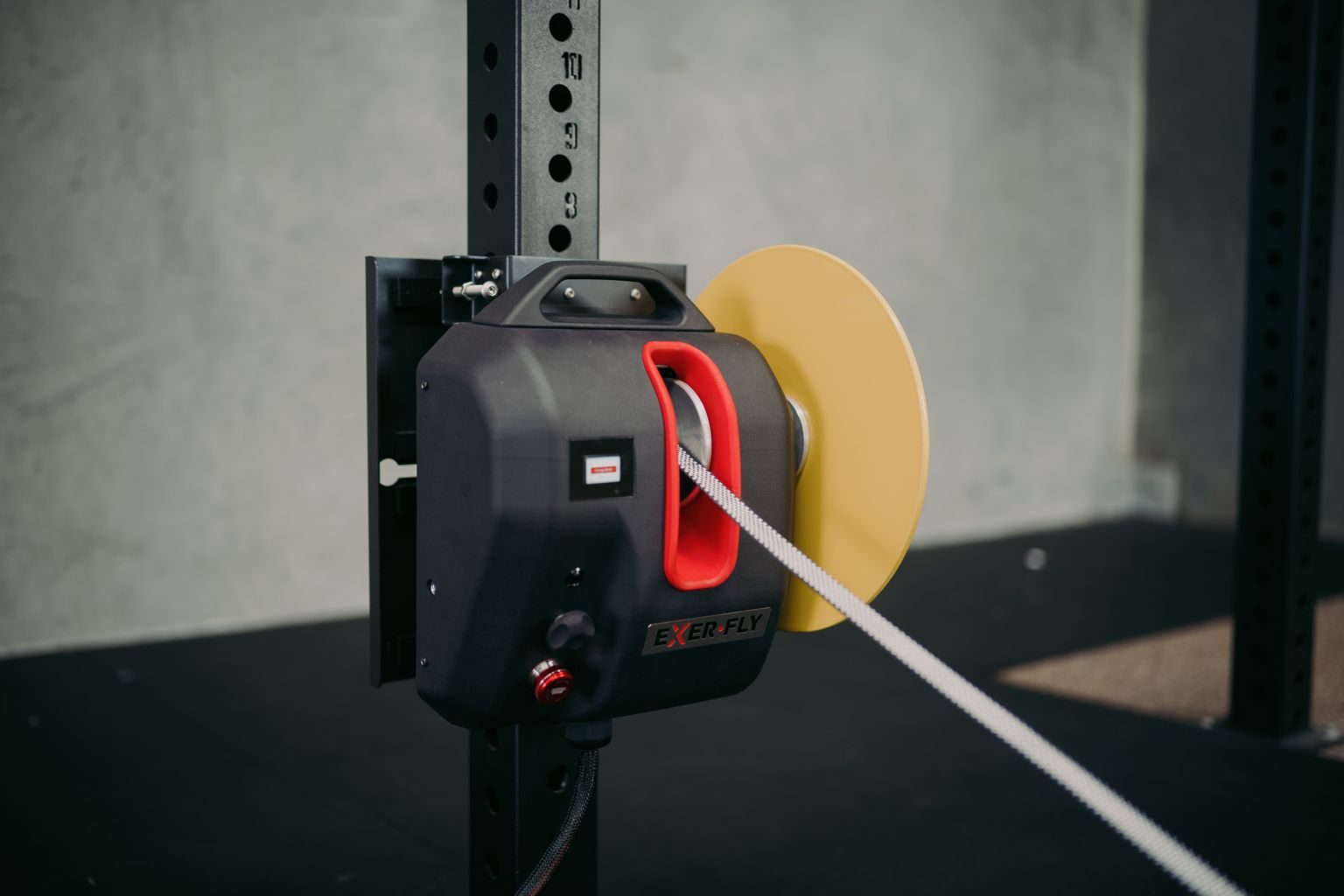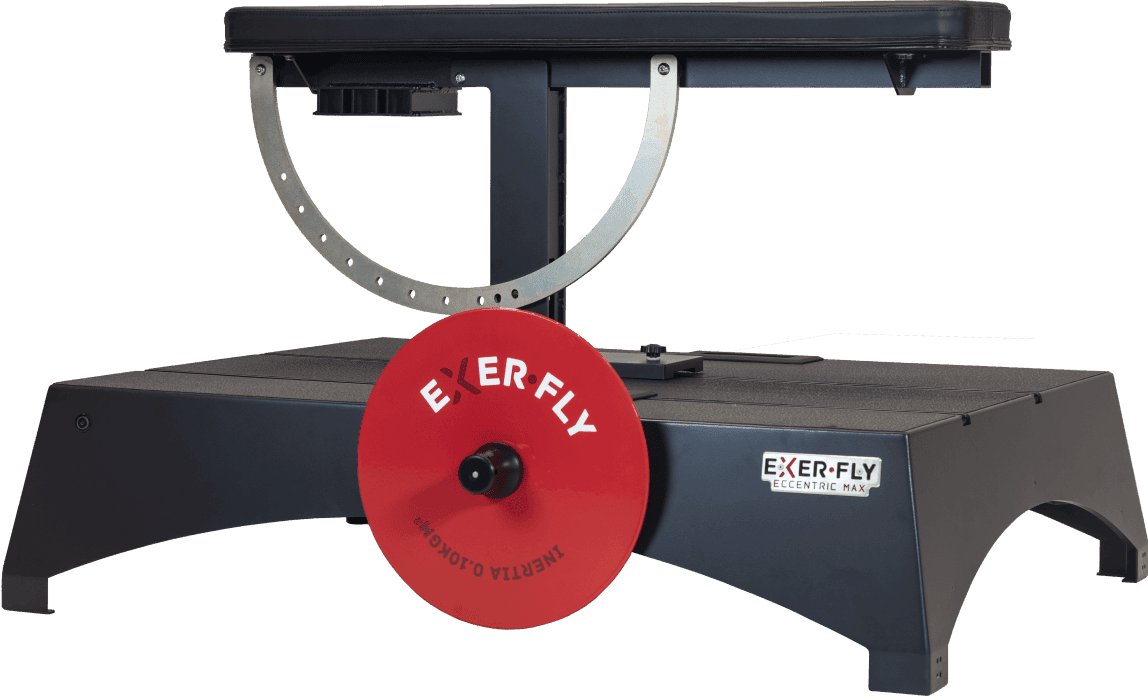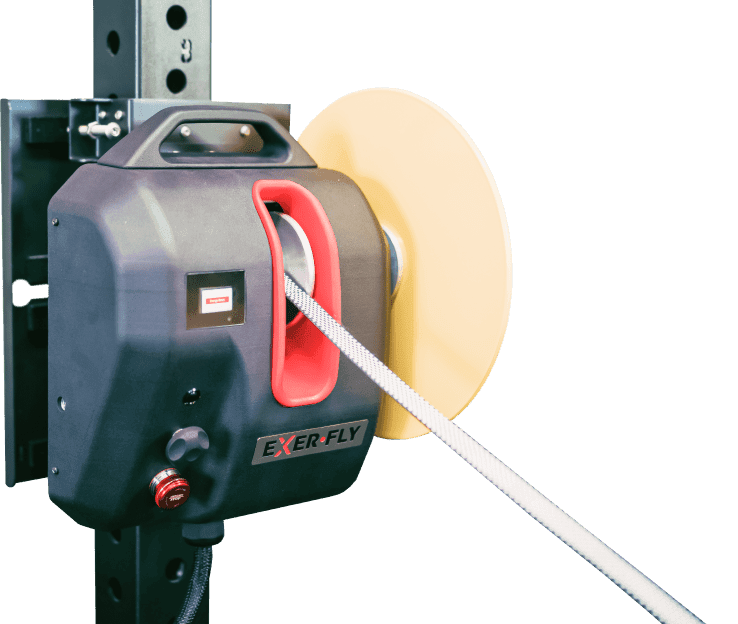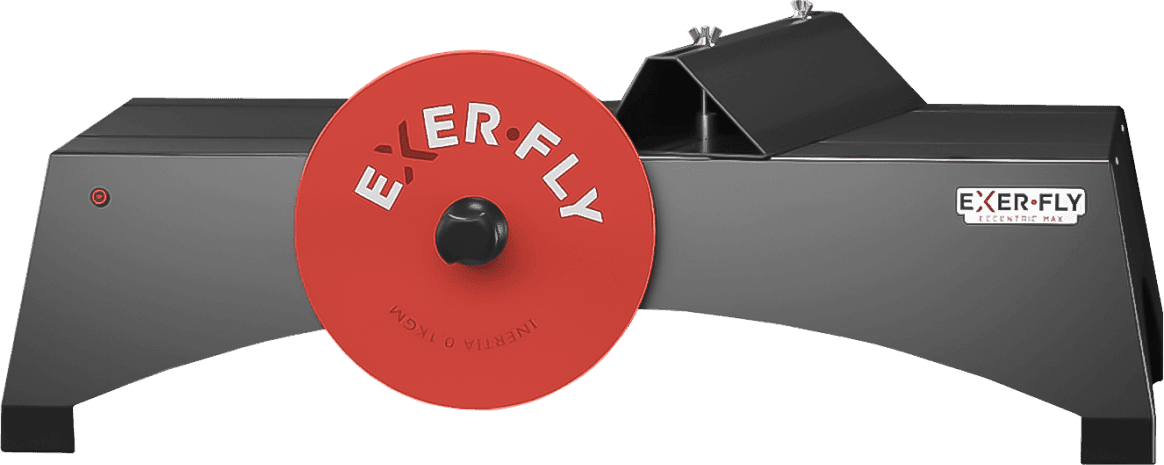
Interview with Ryan Haught
Ryan Haught is a Senior Manager for FinancialForce.com and founder of BlackHyve.com. He grew up playing football and fell in love with the exploration and process of improving performance through weightlifting and sprint training. He played football for Montana State University in the early 2000's and now loves training with his sons to help them become great humans and athletes.
Ryan’s Background
Ryan grew up in Torrington Wyoming, which is a little town in the middle of the United States and the Rockies. He played football growing up, and was pretty interested in making his body bigger, faster, stronger’. He played football for the University of Wyoming when he was eighteen and ended up finishing at Montana State. Ryan has lifted weights his entire life, it's always been a passion of his, and stumbled upon Exerfly when reading a book called ‘Triphasic Training’.
Ryan was trying to figure out a way to help his three sons: aged fifteen, thirteen and eleven, and all football players. Ryan was just trying to find different ways to get them to be fast. That's where he came on the Triphasic training and realized they only trained concentrics. Ryan found Exerfly by typing eccentric and trying to find something that was pulling all those whole three phases of the muscle contraction together. He found a company in Sweden but opted out due to an inconsistency in the data. Ryan knew that if you don’t have the motor on your equipment, you can really only get an eccentric overload if you slam it as hard as you can, then drop and catch it. That's about the only way you can actually probably get a full eccentric over a 100% of an eccentric load, which doesn't make a lot of sense because then you yo-yo the machine. So then he just typed in motorized eccentric and Exerfly popped up.
How Ryan uses Exerfly
Ryan programs in those three phases of the contraction: 2 weeks of eccentric phase, concentric and lastly isometric. A six week whole cycle for off season stuff. And then when it comes to getting ready right before the season, Ryan will do a four week peaking phase where he’ll do a lot more and try to move at game speed. So his fifteen year old ran a four four eight four zero, which is smoking, and now he’s at twenty-two point one miles an hour. They don't do a lot with our upper body, because there's not a need to be strong in your upper body with his son’s sports. When his son was squatting before with his coaches at the High School, everybody moves so slow, and the whole point of being dynamic and fast is you need to be able to move that weight fast. So that’s why Ryan Exerfly, because everything he does is at maximal speed and then there’s eccentric overload.
One of Ryan’s friends from Montana State is six foot seven and weighs two hundred and thirty-five pounds. He's a big guy, he's a quarterback, and Ryan got him up to squatting four hundred and five pounds for sets of five at pretty quick speed. And how they got there is that they don't really squat, they just use the Exerfly and they’ll do a ton of single leg exercises like drop ins.
The Importance of Marketing
For Ryan, if you can't measure data, you can't grade it. His background is in BlackHyve, a startup company he and about three other guys have put together. It's based around construction, they essentially build an Ai to lay out schedules for large construction projects. So it could be a million dollar project up to a billion dollar project. Doesn't really matter, but it was a very complex algorithm to do this work. It's taken them about three years, so they’re going to live with it currently. One of the things that construction struggles with is they just fly by the suit of their pants, and they don't measure anything. So then they don't really grade anything. And what has that led to? Well, in the United States 70% of projects in the United States overrun their schedule. 60% overrun their budget and the labor productivity rate is about 42%. So if you think about a ten hour work day, only four hours a day is productive, and the main contributor to that is the schedule. They're not putting the right people at the right time in the right places to do the job to meet the deadlines. And so what BlackHyve’s algorithm does is, it initially lays all those things out, gives it a nice easy way to size the work to get people in the right place, and then they grade everything on a weekly basis and a cadence. And so at the end of the day, data is king, and they’re able to manage and essentially grab measurement points from something that's never been measured before.
So from a productivity standpoint, the manufacturing industry across the world is almost 16x better than construction productivity. And so why is that? Well, they grade throughput, and all these other things. So at the end of the day BlackHyve is making a tool that functions very closely to how a manufacturing process works, and the key to making it better is understanding the data. And so that's why Ryan was drawn to Exerfly, because he gets real time data out of things. Ryan isn’t detailed with how they track things, he just made a Google sheet and then have it in that triphasic format. They essentially follow those workout parameters, they also sprint under laser time so they know that if you're low in one day, they can tell, or if you're having a good day. It’s just when you're starting to measure things, people tend to perform at a higher level as well and also the data around the performance exists. Athletics has the same problem specifically when it comes to data science around performance. There's not a lot of tools out there specifically. People think they're getting good data because they can see they’re squatting four hundred pounds; but it really matters how fast you move it, and how many times you did it.
Flywheel vs. Traditional Weight Training
Ryan blends Exerfly and traditional weight training together. Exerfly is the one that does all three phases in one sweep, because you still get the isometric because you're stopping and then you're going back up. When it comes to the eccentric phase, Ryan will still load heavy on the back squat and go down for a five second whole count. After that, they'll do hurdle hops and things like that. They do a french contrast methodology when it comes to that, and then they’ll go over to the Exerfly and they’ll use the Exerfly at game speed the entire season. The main difference is they’re able to short circuit the triphasic methodology by essentially doing the triphasic. They’ve pulled some things out, so it's not as long a workout and then they enhance it with the Exerfly. Ryan squatted to five hundred and five pounds the other day. Before the football season, he's never squatted like this.
Ryan currently weighs around two hundred and five to ten pounds, depending on the day, and the most he squatted was twenty years ago when he squatted four hundred and five pounds. Now at 42 years old, his body feels great, he does all the same workouts as his kids and even ran a four eight. The fastest he's ever been was when he ran a low four-four in college, so he's been there before, but it's been twenty years. Two summers ago before buying Exerfly, the fastest he ran was a five one.
DOMS
Ryan hasn’t thought about DOMS since buying Exerfly. Training three to four days a week, he hasn't even worried about it, even after a heavy squat, so DOMS isn’t something he worries about.
Eccentric Motor
Ryan uses the motor on every single thing they do, using up to 10%. He finds that you have to have a rhythm when doing exercises on the machine, and he likes that the Exerfly keeps you in the rhythm because it's always keeping it tight. So it helps with the younger guys, like his eleven year old and his thirteen year old.
Exercises on the Exerfly
Ryan has built an apparatus with a long bar around the Exerfly, from which he does single-leg squats and double-leg squats, rotation work, back work and the hip flexor movement. No one ever works for hip flexors, and that's one of the key contributors to speed. On average, he does twenty to twenty-five different exercises on it, depending on the phase and what they’re doing.
Looking at Metrics
Ryans tracks three things: the size of the wheel, the setting of the eccentric load and Watts. What he always tells his kids is that they’re never trying to do twelve reps, because they want to hit it as hard as they can. So he wants either five to eight good reps, and it might take ten to eleven reps to get there, because you’ve got a warm up. Then he’ll look at whether you’re hitting some peak velocities or Watts, and trying to maintain that for five.
Ryan’s Workouts
When coming into the peak phase, Ryan does a lot of band work, running full speed and other oscillatory activities to get the neuromuscular systems moving in the proper format.
Use of Traditional Training
Ryan uses a hybrid of Exerfly and old school equipment. So they do a lot of banded work in the peaking phase. They do a lot of unilateral work like single leg Romanian deadlifts on the Exerfly. Ryan has some knee issues and to warm up, he'll do a hook, get on the Exerfly and do single leg extensions to get his knees warmed up.
Ryan’s sons results with Exerfly
Over the past 18 months since purchasing the motor driven Exerfly, Ryan has seen some really nice results for his 15 year old son. They have been programming workouts utilizing Cal Dietz's Triphasic methodology. They work in two week blocks following eccentric based work for 2 weeks, then isometric for two weeks, and concentric for two weeks. One of the main reasons they like the Triphasic methodology is the change in workouts every 2 weeks as it really helps to keep the mind engaged and looking forward to the next block. Also, most people in the US focus solely on the concentric phase of the muscle contraction and miss out on the other two phases which are really the most important when it comes to sports movements. Ryan doesn't want body builders, he wants speed.
On a more tactical level they use a traditional squat rack with Marrs bar (better version of a safety bar) as the base leg lift allowing them to do single leg safety bar squats with supermax loads. Ryan then moves into single leg drop-in squats on the Exerfly. From his experience as a college athlete 20+ years ago and lifting with his three boys today, his main goal is weight room transfer to the field. Ryan doesn't care about how much weight you can bench or squat at slow speeds. He is looking at moving the most amount of weight at game speed. This is the difference the Exerfly has given his boys. Everything they do on the Exerfly is full speed with an eccentric overload of 20-30%. You can not get that anywhere else in the weightroom safely. Cal Dietz talks about the importance of safety bar squats at a supermax load. Ryan gets this every rep on the Exerfly without spotters on each end of the bar. It is a game changer.
Will's results in the last year
- 10 yard fly velocity - August 2021 - 19.68 MPH (8.79 m/s) / August 2022 - 22.22 MPH (9.93 m/s)
- FreeLap timing system used for velocity and timing
- Vertical jump - August 2021 - 29 in / August 2022 - 34 in
- Traditional Squat - August 2021 - 305lbs / August 2022 - 425lbs
Will is 5'9" and weighs 155lbs






